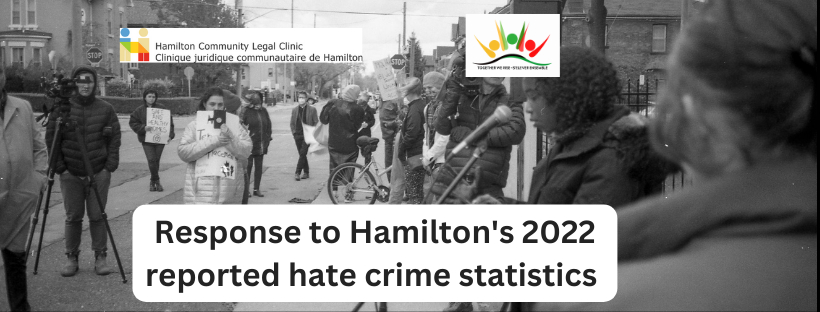
In 2022, the city of Hamilton saw a 61% increase in reported hate crimes, of which the Black community is a targeted group, among other communities. In previous years, Hamilton had the highest number of hate crime reports in Canada and was deemed by the media as the hate crime capital of Canada. Hamilton has a lot of work to do.
This information comes as no surprise to Black community members and to all those on the frontlines of advocating against the harm and racism that our communities experience. It is important to note that this statistic only minimally represents the experiences of Black community members, as many often do not report incidents to police or authorities due to a lack of safety or willingness to subject themselves to a process of hate reporting.
It is without question that life as a Black person in Hamilton is difficult to support. Through the advisory committee of the Black Justice Program at the Hamilton Community Legal Clinic known as Together We Rise/Selever Ensemble, we know Black community members face higher rates of income insecurity, housing insecurity, poverty, criminalization and harm. Currently, Black tenants are overwhelmed with high rents, lack of maintenance and unsafe living conditions in the downtown core. Students are experiencing structural racism in schooling systems. Black community members are subject to higher incidents of low-income and/or precarious employment. Black community members experience medical racism and are often subjected to hate in the public arena as political candidates. Increasingly, Black community members are experiencing violence in all sectors of public and private life. Hate trends often do not reflect this reality of systemic and institutional anti-Black racism. All of this is important in acknowledging these trends as a part of a larger structure of anti-Blackness, what it looks like and how it comes about in every facet of Black life.
In addition to raising awareness of anti-Black racism, we all must collectively and holistically build capacity amongst the Black community and address these systems of anti-Blackness and oppression.